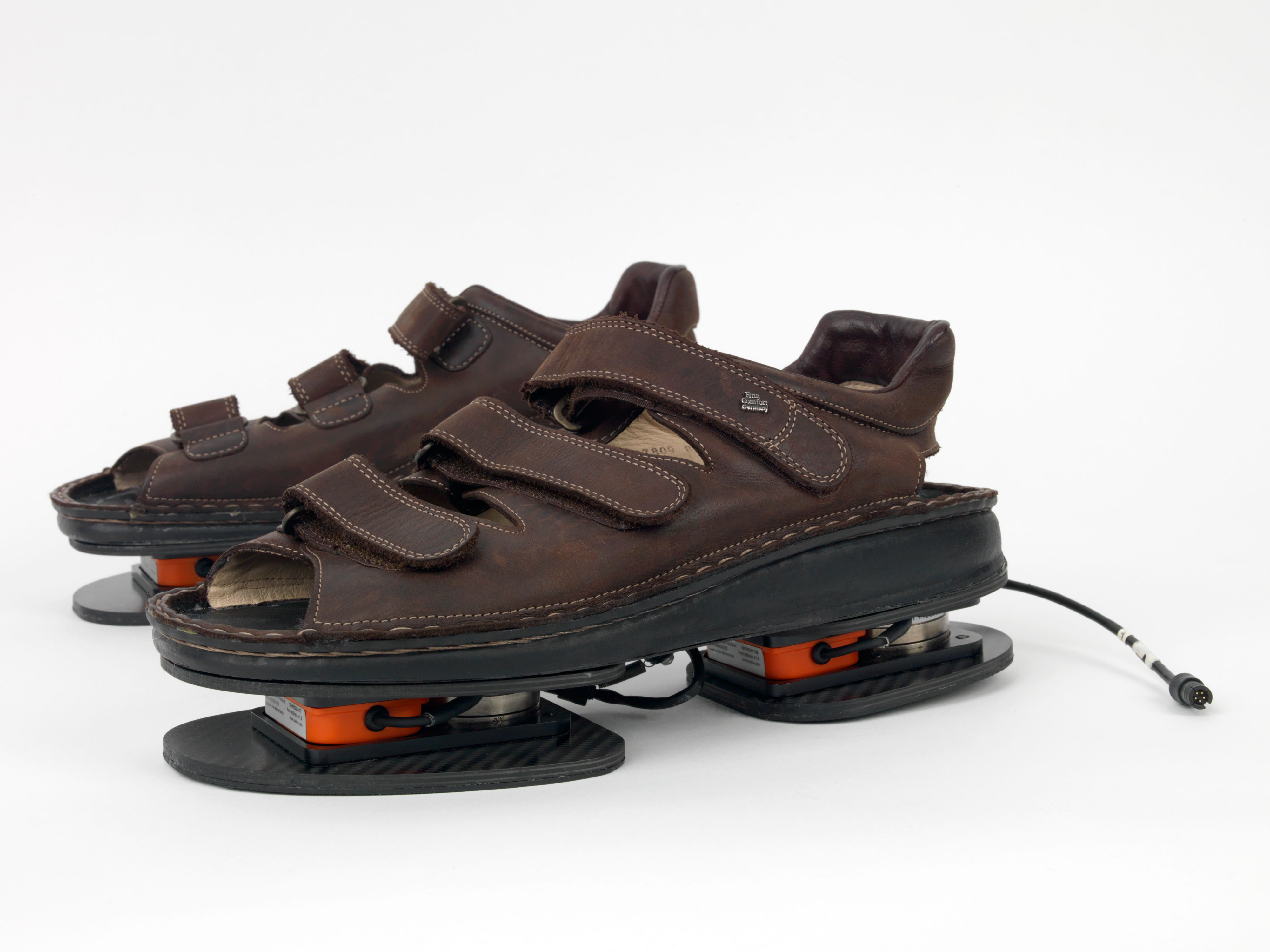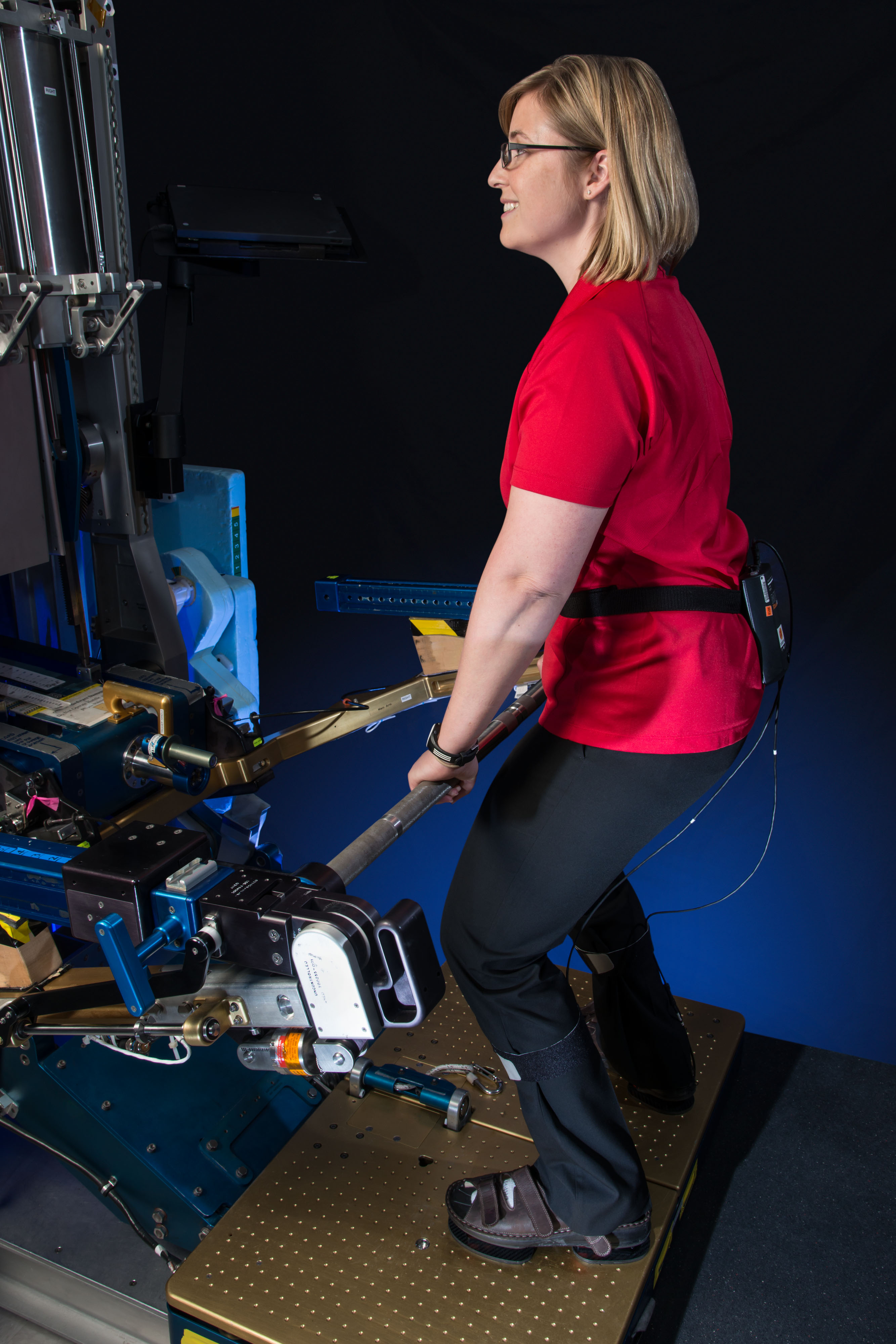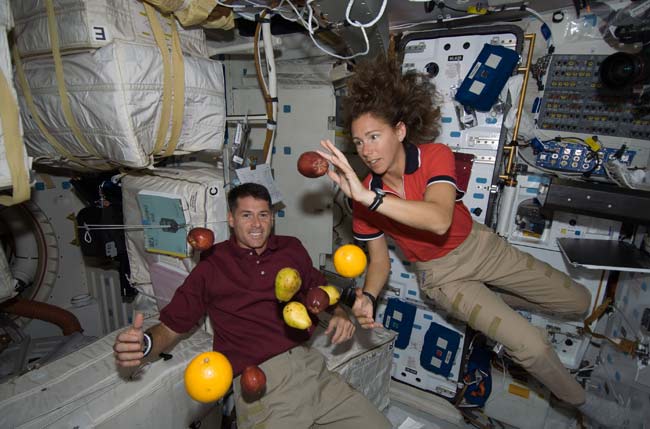Running in Space: New 'ForceShoe' to Monitor Astronaut Exercise

A new pair of running shoes may help you run a personal best, but a different kind of shoe could help spacefarers stay fit. The shoes, which will be worn by astronauts in space, may help scientists on the ground learn more about how the body responds to weightlessness on the International Space Station.
NASA officials sent a device called the ForceShoe to the space station in May so astronauts can literally put it through its paces. Space station occupants will wear the shoes during some of their exercises, so that researchers can learn more about how the body's joints behave in microgravity.

During their outer space missions, astronauts must be careful to maintain their muscular and skeletal systems, which tend to atrophy in low-gravity environments. To help the astronauts exercise, NASA developed the Advanced Resistance Exercise Device, a machine that makes weight-bearing workouts possible through the use of vacuum cylinders. [The Human Body in Space: 6 Weird Facts]
"Although [the ARED] has helped NASA provide better health outcomes for crew members, there is still progress to be made in understanding the effects of exercise on bone and muscle health, and the ForceShoe will help us do that," Andrea Hanson, space station exercise hardware specialist, said in a NASA statement.
Similar force-shoe technology has been used before, but only on Earth.
"We are eager to understand how joint forces may be different between exercise performed on the ground and in space, and force-shoe technology might help us do this in future investigations," Hanson added.
The ForceShoes, developed by the 3D motion tracking company Xsens, look like electronically enhanced sandals and measure forces along three axes: up and down, front to back and side to side. Two to four astronauts will wear the shoes, first during static and then during dynamic exercises.
Get the Space.com Newsletter
Breaking space news, the latest updates on rocket launches, skywatching events and more!
In the static exercises, astronauts will set the ARED to a predetermined load and then lift the exercise bar. This procedure will confirm that the shoes work as well in low gravity as they do on Earth. Once researchers have confirmed the shoes' effectiveness, astronauts will wear the devices during exercises that include squats, bicep curls and deadlifts. Data will be transferred by Bluetooth to space station computers, and then, a few days later, to NASA computers on Earth.

The data gathered by the shoes will help NASA refine the exercises that astronauts perform, making them more efficient. The more-efficient exercises will help astronauts more easily maintain bone and muscle strength during long space flights to other planets.
Follow Raphael Rosen @raphaelrosen22. Follow us @Spacedotcom, Facebook and Google+. Original article on Space.com.
Join our Space Forums to keep talking space on the latest missions, night sky and more! And if you have a news tip, correction or comment, let us know at: community@space.com.

Raphael Rosen is a science and technology writer. He has written for the Wall Street Journal, NASA, the World Science Festival, Space.com, EARTH, Discover, Sky & Telescope, Scholastic Science World, the American Technion Society, SciArt in America, TheFix.com, the Encyclopedia of Life, Princeton University, and the Princeton Plasma Physics Laboratory. He has also written a children’s book about outer space.









